We kicked off this year’s Spy Fiction Month with a comic set in World War II and we’ll finish with one as well. Like I mentioned last week, in 2001 Garth Ennis and Darick Robertson reinvented Marvel’s war-hero-turned-super-spy Nick Fury as a grizzled veteran addicted to combat, not to mention a foul-mouthed alpha male out of step with the times…
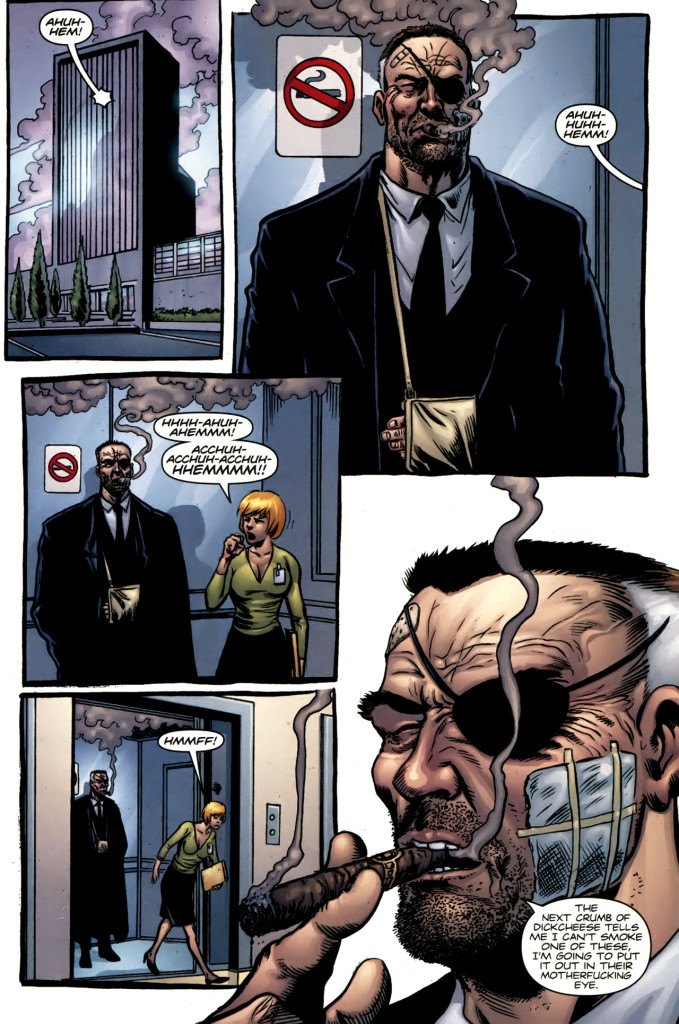 Fury MAX #6
Fury MAX #6
This take on Nick Fury was so appealing that Garth Ennis has kept going back to it. Colonel Fury was a recurring character in his run on The Punisher MAX and he has starred in two more Ennis-written limited series so far, starting with 2006’s Peacemaker, once again illustrated by Darick Robertson.
A World War II tale, this is basically a prequel to Fury MAX. The plot is completely independent, with Peacemaker working perfectly well as a standalone read, but it sets up the characterization that Fury displayed in the previous mini-series (and it has a small Easter Egg calling back to a throwaway line about Rudi Gagarin, the villain of Fury MAX).
The opening of Peacemaker reads like a straight-up military yarn set in the North African desert. This is fine by me, not just because I’m into this kind of stuff (Zoltán Korda’s Sahara is such an awesome film!), but because Garth Ennis is arguably the greatest writer of WWII comics. He kicks things off with a griping sequence – perhaps a nod at the training and equipment failures in the then-recent U.S. wars in Afghanistan and Iraq – neatly contrasting the overconfidence of the American forces going into battle (in mini-flashbacks that stand out because of Raúl Treviño’s subtle color changes) with their first brutal clashes against the well-prepared German army.

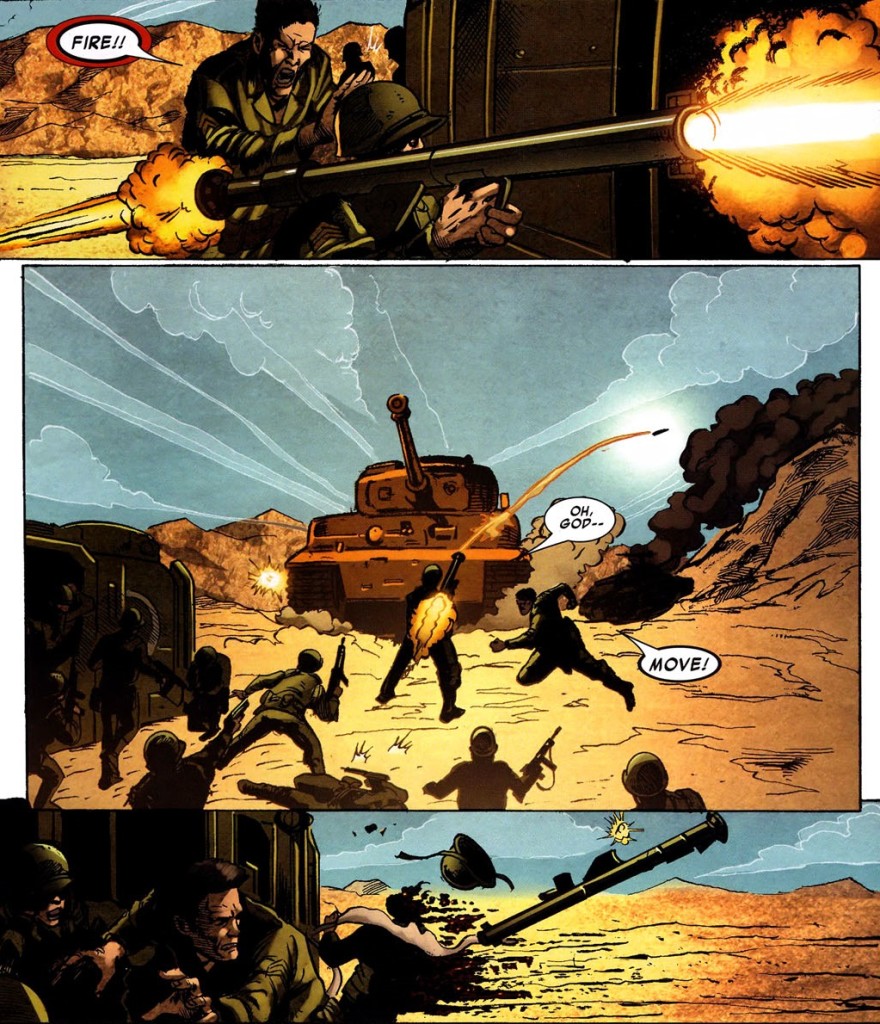 Fury: Peacemaker #1
Fury: Peacemaker #1
Yet the point is not the battle itself or even its geostrategic implications, as Peacemaker is above all a character study about a younger, then-Sergeant Nick Fury. In a classic Ennis trope, the first time we see Fury he is threatening to kill his superior in the middle of combat (‘Lieutenant, you show these men some leadership or I swear to God I’ll blow your head off!!’). After a military clusterfuck, Fury ends up adrift behind enemy lines and eventually gets rescued by a brigade of the U.K.’s Special Air Service (the SAS being another recurring presence in this Northern Irish writer’s comics) headed by Captain Peter Kynaston. The latter proves to be a decisive influence on Fury, especially when they go on a joint mission to assassinate a brilliant German field marshal, Stephen Barkhorn.
If you know the creators’ track record, you’ll rightly assume that Peacemaker’s approach to WWII adventure feels closer to the black comedy of Inglourious Basterds than to the lighthearted pulp of Captain America: The First Avenger. Still, both Ennis’ script and Robertson’s pencils (once again inked by Jimmy Palmiotti, replaced in the final issues by Rodney Ramos) are much more restrained than in their Fury MAX mini-series, downplaying the raunchy farce and hardcore gore in favor of a more grounded and wittier tone. (Notably, Peacemaker came out in the Marvel Knights line rather than the R-rated MAX imprint, so there is no harsh swearing or nudity in this one.)
Regardless – or perhaps because of it – the dialogue is a joy to read. Ennis does his usual shtick, drowning the cast’s banter in thick military slang (including the usual national nicknames: the Jerry, the Huns, the Ivans…) and expecting you to follow along without much obvious guidance. Barkhorn’s chief of staff, the monocle-wearing Oberstleutnant Hans von Stehle, gets the best lines, displaying the kind of dry wit that instantly turns him into a memorable opponent.
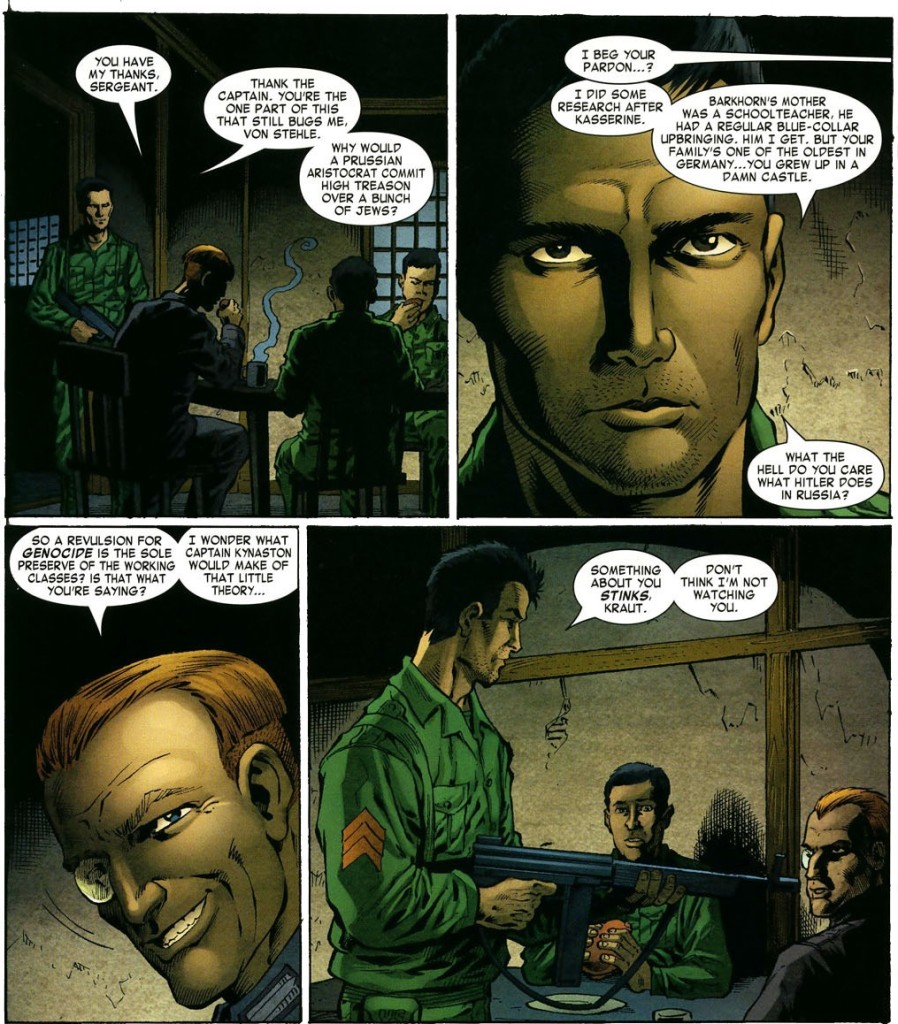 Fury: Peacemaker #5
Fury: Peacemaker #5
It’s not just that there are no dumb characters, for once. Peacemaker also does a nice job of showing different points of view within the German camp, bringing to the table a level of multilayered moral complexity you also find in some of Garth Ennis’ other war stories (like in the tremendous Night Witches).
That said, the series’ main themes are clearly spelled out. In their first meeting, Stephen Barkhorn explicitly tells Nick Fury that if he wants to be good at war, he should learn to enjoy it. Later, you can see the glint in Fury’s eyes as Peter Kynaston tells him about this irregular force driving behind enemy lines, away from their own ‘damn fool general staff,’ raising hell where it hurts the most by hitting German supply convoys and ammunition dumps, ‘not overly concerned with spit and polish.’
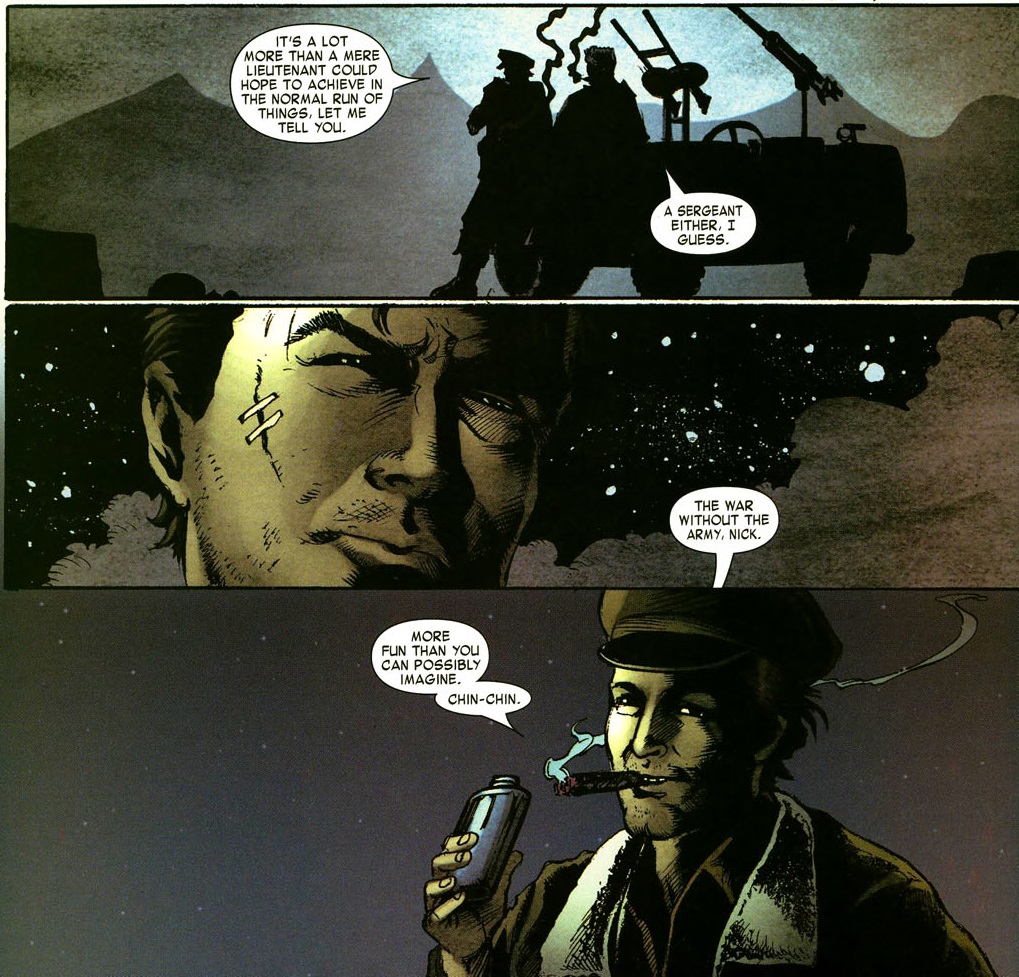 Fury: Peacemaker #2
Fury: Peacemaker #2
By the end, when Nick Fury toasts to the looming Cold War, there is little doubt that this has been the story of Fury falling in love with warfare.
But is it a spy comic as well? Up to a point. The bulk of Peacemaker concerns Fury’s and Kynaston’s secret assignment to assassinate Barkhorn, with the twist that instead of their target they find a group of officials who claim they are willing to put an end to the war. Half of the story takes place during a siege at a German estate, where our protagonists have to deal with different types of tension. First and foremost, they’re never sure if they can trust their seemingly cooperative prisoners. But on top of that, they have to deal with the possibility of ending World War II earlier, which is not as straightforward a decision as it may sound…
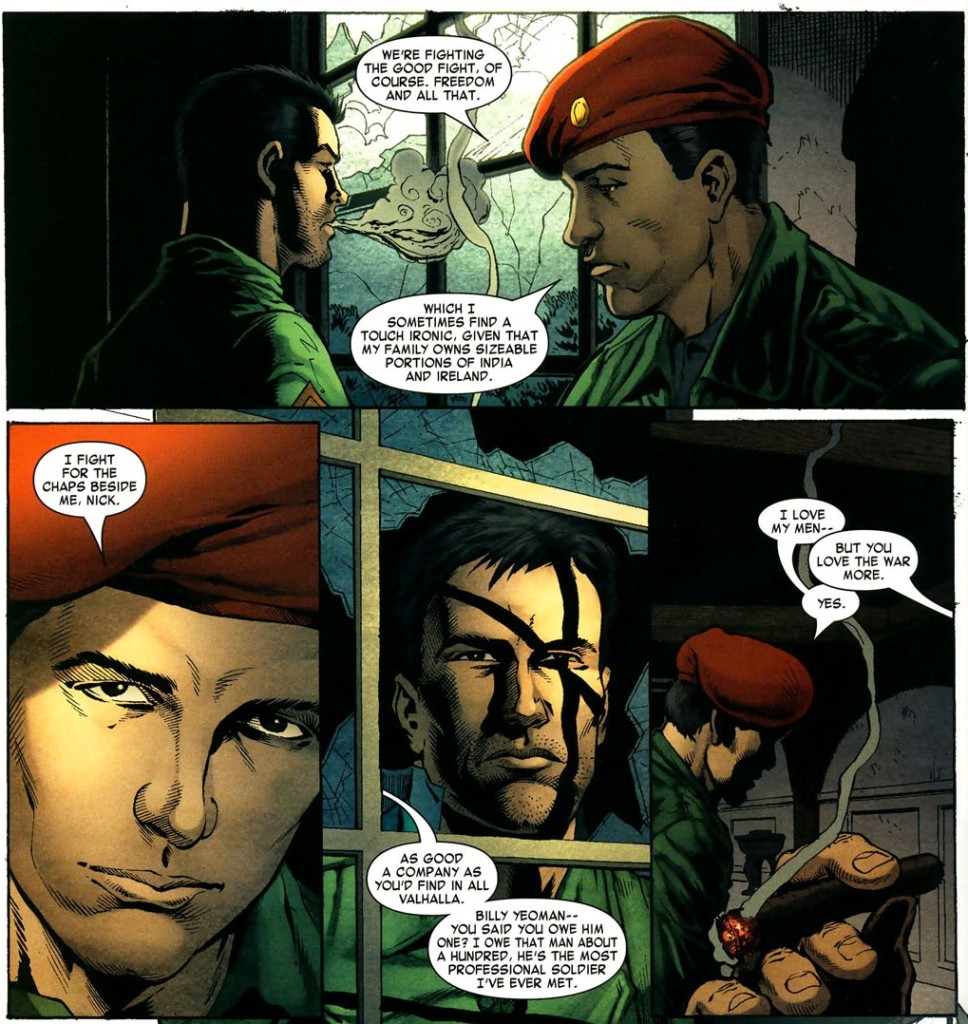 Fury: Peacemaker #5
Fury: Peacemaker #5
Check out the panel foreshadowing Nick Fury’s future eye-loss by literally crossing out his eye with shadows as he listens to Kynaston’s sinister views (not too distant from the Nazis’ own cult of war). It’s not just an eye that Fury is about to lose…
